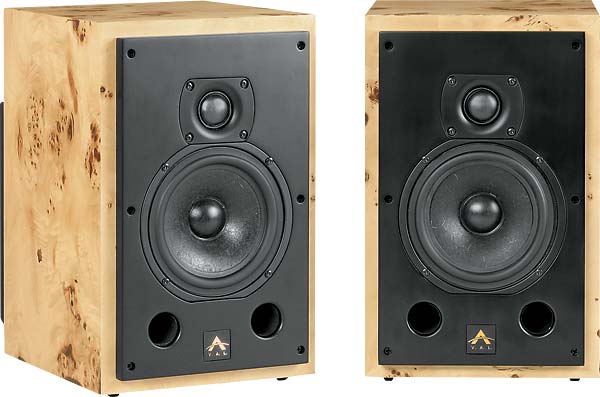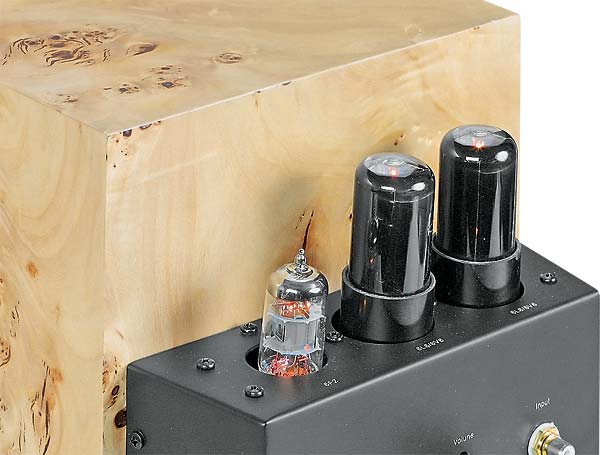Photos and specs Speaker pair VAL M50

Chinese company VAL experiencing obvious attraction to use light (in the range of many tube models). Not spared this commitment and speakers M50. The company relies on a pleasant "tube sound" and the small size of the AU. Design Model M50 consists of two parts: a passive speaker, made in MDF, and a tube amp, which is located on the rear wall. Lamps handed out for better cooling, as well as for aesthetic enjoyment of their respective owners. Used 25 - mm tweeter made in Germany, and 130 - mm midrange / woofer originally from France. Two small reflex port located on the front metal panel.
Presence "behind" AS VAL active amplifier vacuum devices is immediately detected in the sound. This is evidenced nicely warmed sound color, smooth tube, plasticity, roundness, as would be easy "oiliness" melodic lines. This, rather than uncompromising precision and strict analytic enclosed main advantages of sound model. Perceiving mellifluous musical image generated by these fairly inexpensive speakers, does not think about academism and so on. It should be noted that the sound system is quite right tonal balance. The structure of the musical fabric is clear in the middle and high registers. Woofer material speakers are less clear, moreover, that the bass VAL quite resilient, agile collected. The sound of these speakers is average energy and spatial resolution.

Lamps are on the rear speakers and emit a soft glow, particularly spectacular at night.

Fig. 1. Frequency Response.

Fig. 2. Nonlinear distortion factor.
If the previous participants test their AFC reminded of his "studio" origin, then VAL contrary - schedule frequency response resembles a regular speaker with quality indicators. We see the characteristic "mound" at 100 Hz, providing a good elastic bass, smooth enough curve from 170 Hz to 1 kHz. After that mark speakers prefer to embellish a little sound, with an emphasis on specific frequencies. This is particularly evident in the range from 8 to 20 kHz, where the height of the "peaks" can reach 6 dB. This is confirmed by calculations of the average non-uniformity of the exponent in the range of 100 Hz - 20 kHz up to 2.13 dB. In the range of 160 Hz - 1.3 kHz flatness is already 0.53 dB, which is much better. A 30-degree angle and smoothed response rate becomes very uneven already worthy. Imbalance with all the best and is -0.3 dB. The lower boundary of the speaker starts at 41 Hz, which is very, very good, given their size. By the nature of the graph can be judged CED 's commitment to the signal average speakers and a small volume. By increasing the level to 94 dB THD increases to 5.13% in the low-frequency region and 0.7 % in the rest of the range. Characteristic itself sufficiently "brittle" distortions are down and equalized just after 2 kHz.
| Copyright © 2013-2024 audio-reviews.com |